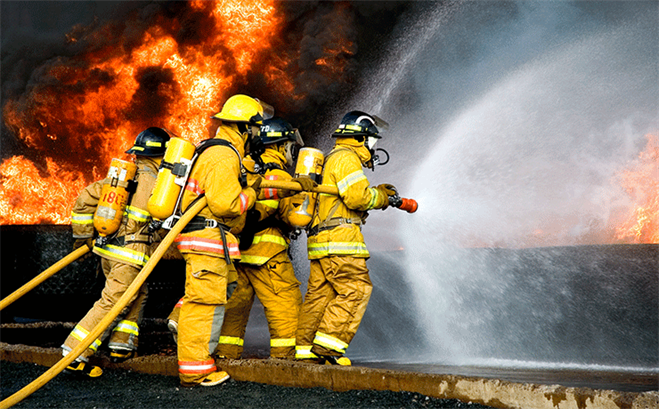3 Ways Inspection Software Improves Firefighting
June 04, 2024 by Kate Nadolski

For fire crews, staying one step ahead of potential dangers is not just a best practice — it's a necessity.
In the world of protecting lives and property, the importance of proactive prevention in fire safety is critical. When considering how fire inspection technology can revolutionize the landscape of fire prevention and response, look for tools that can do the following:
- Identify risks before an emergency
- Ensure compliance and accountability
- Promote education and awareness
Find Out the Risks Before the Emergency
Fire inspections are the frontline defense against potential fire hazards. Inspectors identify risks before they have the chance to escalate into emergencies by systematically and routinely assessing properties for compliance with fire codes, safety regulations, and building standards.
From faulty wiring and blocked exits to inadequate fire suppression systems, fire inspections uncover vulnerabilities and provide the opportunity to implement corrective measures, mitigating risks and preventing disasters before they occur.
When fire inspectors have prevention software that can streamline and eliminate manual processes, they are better able to provide vital services to the community. During an inspection, fire crews can utilize technology to digitally document the building they are inspecting and take notes that could one day provide quick mission-critical information if an emergency were to occur at the location. Many agencies use their tools to create pre-plans for most businesses and large properties in their area. By doing this, they’re gathering details about entry points, hydrant locations, hazardous material risks, and more to ensure crews are as prepared as possible when heading to the scene of an emergency.
Be Compliant and Enhance Accountability
Compliance with fire safety regulations is a fundamental responsibility to protect lives and property.
Fire inspections play a pivotal role in ensuring compliance by holding property owners, managers, and occupants accountable for maintaining a safe and secure environment. By conducting regular inspections and enforcing adherence to fire codes, inspectors create a culture of accountability that fosters a collective commitment to fire safety within our communities.
Fire inspectors have access to innovative technology that allows them to investigate on-the-go more quickly and efficiently. These tools allow for photos to be taken and documented right on scene, then digitally stored for reference and sent to the property owner. Because these tools are all totally digital, it becomes easier for personnel to track and reference outstanding requests and follow up with property owners frequently to ensure they are taking the proper action to comply and pass inspection.
Promote Education and Awareness
Fire inspections are not just about enforcing rules and regulations — they're also about educating individuals so they can take proactive steps towards fire prevention.
By providing recommendations to property owners and occupants on best practices for fire prevention and preparedness, fire inspectors serve as ambassadors of fire safety in their communities. By raising awareness and promoting education, fire inspections help individuals recognize and mitigate risks in their own environments, thereby creating a culture of safety that extends beyond the inspection process.
Fire inspections safeguard neighborhoods against the threat of fire and help crews build safer communities.